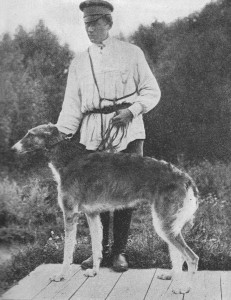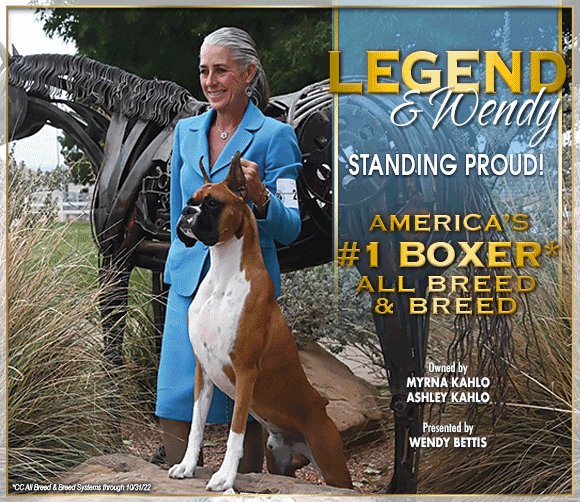The Borzoi – A Wild Ride to Survival
By Amy Fernandez
 Importing dogs is never fun or easy, but the technical challenges wax and wane according to forces outside our control. At the moment, that’s mainly due to pandemic travel restrictions, economic volatility and a bit of war thrown in for good measure. Like I said, all beyond our control.
Importing dogs is never fun or easy, but the technical challenges wax and wane according to forces outside our control. At the moment, that’s mainly due to pandemic travel restrictions, economic volatility and a bit of war thrown in for good measure. Like I said, all beyond our control.
There’s always gonna be something complicating an inherently exigent situation. The thing is that dedicated breeders will find a way around roadblocks because they see the big picture. That dog or bloodline is worth the effort.
Writing a Borzoi overview for the March 1947 Gazette, Arthur Fredrick Jones conceded that WWII had dealt a drastic blow to much of the dog world. “This is particularly true of dog breeders who, despite the preponderance of all evidence, are looking even now at depleted European kennels in the hope that some miracle of breeding will produce near perfect dogs over there.”
However, he added that this kind of frustration was nothing new for the Borzoi fancy, “We speak of the iron curtain that now cuts off our knowledge of Russia as effectively as lead insulation, but we forget that the old Czarist Russia was hardly more open to foreign visitors than the Soviet version.” That inaccessibility, which extended far beyond dog breeds, resulted in much speculative imagining. It might be likened to the fascination surrounding other exclusive cultures like Tibet. When Tibetan breeds finally reached the west, we got everything wrong. And that was pretty much the case for the Borzoi as Jones admitted. He wrote, “That is why it happened that when a few scraggly pairs of Borzoi seeped out to England, France and other western European countries there was little way of telling that these hounds were, for the most part, the discards from various kennels.”
As a result, America got off to a dismal start when the first Borzoi arrived here in 1889. One blunt critique described her as small, weedy, lacking bone, with a curly tail and coat, and far too much bend of stifle. But, as Jones said, this didn’t impede America’s interest in the breed. “Twice within a ten year period –just before and shortly after the turn of the 20th century–American breeders made extensive trips through Russia inspecting the various types that country had to offer. The result of this first-hand study of correct Russian type was that some of the finest specimens were brought to this country not once but on a number of occasions.”
Jones was mindful of brevity in that article. But even he couldn’t simplify that enormous challenge. The primary figure associated with that aspect of Borzoi history is, of course, Joseph Thomas, who subsequently wrote extensively about his experiences in Russia and vastly expanded current knowledge of the breed. By the time Thomas and other Americans went over to find stock, almost no purebred Borzoi remained in Russia; “[E]ven though for several hundred years the great estates of Russia maintained kennels of these superb hunters.”
Obsessed is the only way to describe Thomas’s quest. Despite the odds, he refused to take no for an answer. And in retrospect, it’s fair to say that the Borzoi might have disappeared if Joseph Thomas hadn’t managed the impossible by getting into Russia, enlisting the cooperation of the handful of breed supporters that remained, and importing enough top quality stock to found a viable gene pool over here.
Jones said, “Joseph Thomas in particular–the second American to spend time in Russia–set up kennels here that had no rivals for quality of stock outside of the Perchina Kennels of the grand Duke Nicholas and the Woronzova Kennels of Artem Balderoff, both of which had supplied his original specimens. And it is that strain–forty years later–that is still to be found in many of the leading show kennels.”
The purebred Borzoi was almost gone in its homeland by then. The handful of kennels that existed in Europe were based on rejects, dregs, and Borzoi-doodles. It was a failing breed in every sense, which made the Borzoi’s subsequent turnaround even more astounding.
Never underestimate the impact of great dogs and competitive spirit. The breed hit its peak popularity here in the early 20th century “[D]ue in large measure to the fact that several large kennels were continually competing for top honors. Even in 1926, the first year AKC had a breakdown of registration figures, the breed was in 17th place with 482 individuals entered in the studbook for that year.” The good times were good, but not perfect as Jones noted. “At the peak of his popularity the Borzoi was often seen beside a graceful Gibson Girl of the period, emphasizing only the beauty of the breed.”
We can speculate about why registrations dropped after that, hitting bottom in 1935 with just 85 registered. AKC revised the name to Borzoi in 1936 and 147 were registered in 1940, making the breed 47th in popularity. But it began dipping again the following year. “As a big breed it suffered during the war years when food was difficult to get and dropped back to 58th place.”
The Borzoi has definitely endured a wild ride to survival. Last year it ranked 104th , just about mid-pack of AKC breeds. Regardless of which way it goes from here we know it’s here to stay- thanks to those breeders who refused to take no for an answer.
Short URL: https://caninechronicle.com/?p=255809
Comments are closed












